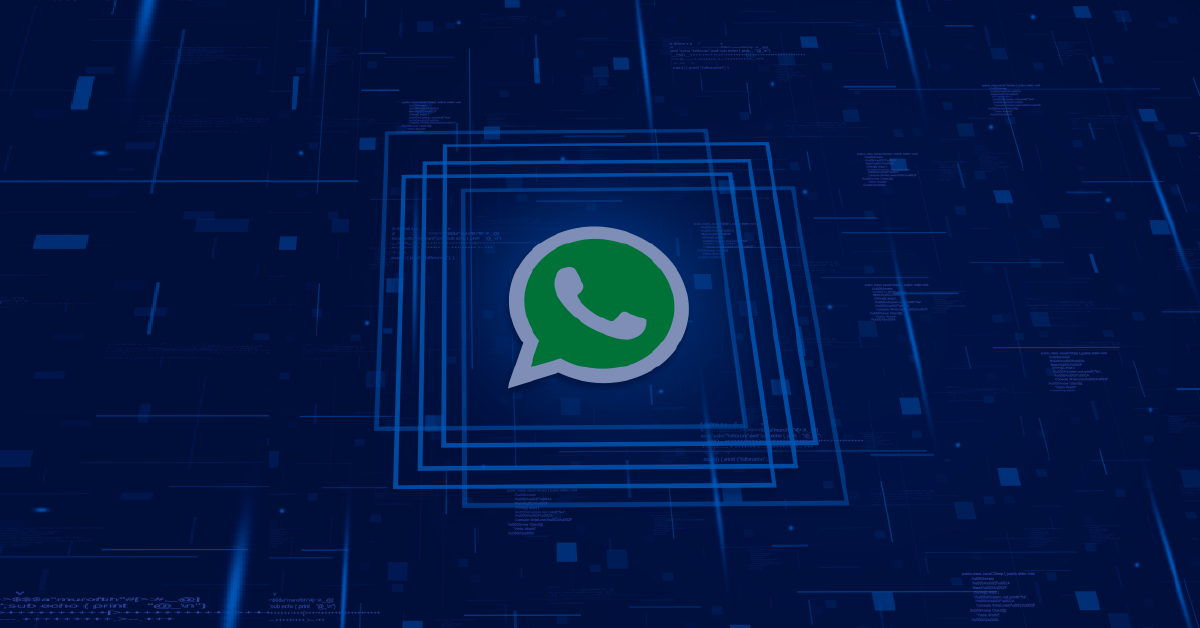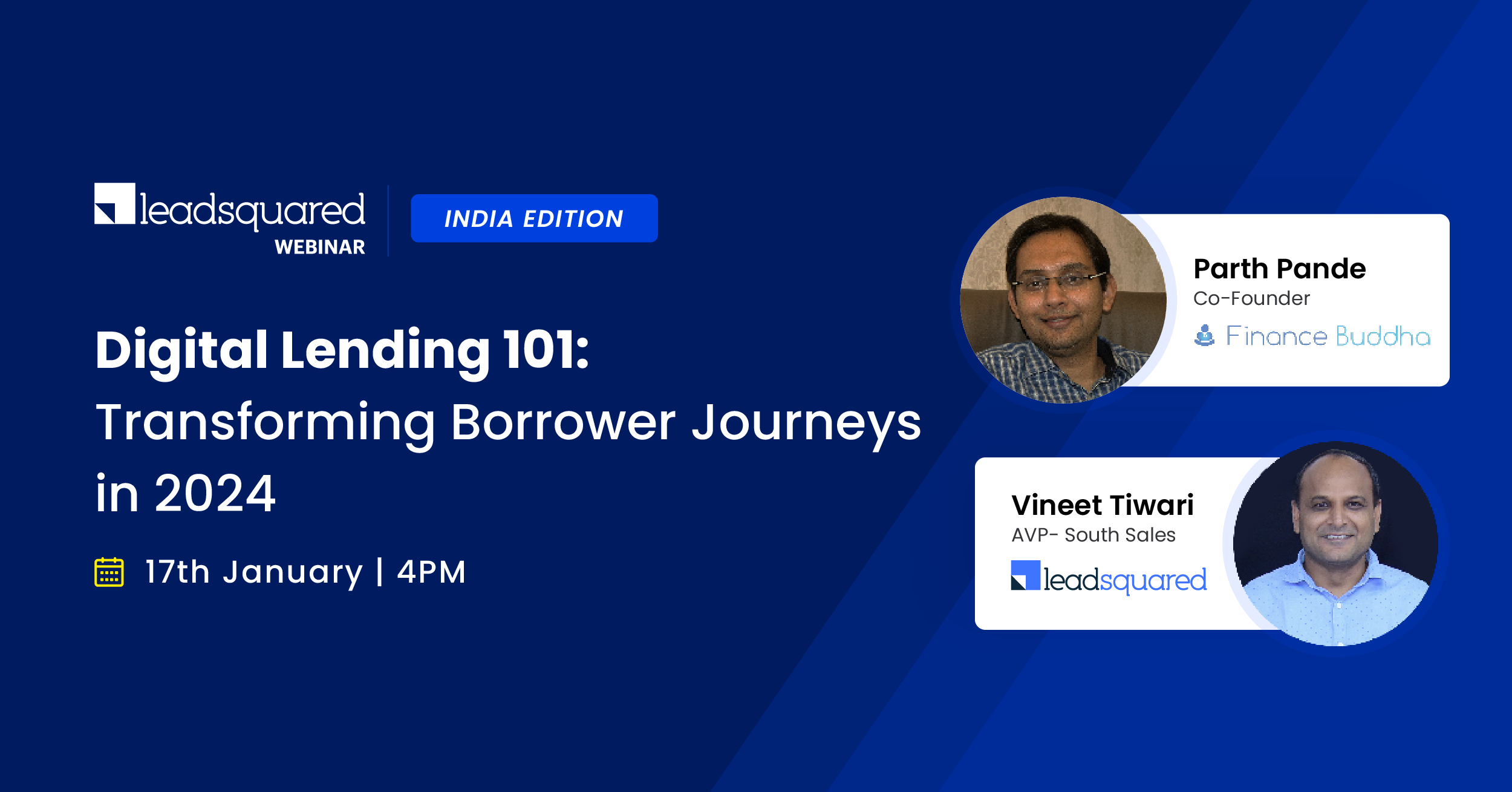Have you ever wondered how inbound and outbound sales are different? Or felt confused about the best approach for your business?
On the surface, they might seem like two sides of the same coin, but dig a little deeper, and you’ll discover they’re more like distant cousins than twins.
An outbound sales strategy relies heavily on sales reps’ ability to reach the right prospects, demo your product/service, send follow-ups, and close deals.
In contrast, inbound sales bring prospects to your doorstep through your website, blog, social media, or other channels.
But deciding what’s best for your business is more complicated than it looks.
In this article, we’re going to break down both inbound vs. outbound sales, giving you the lowdown on each and some handy tips from the pros to help you figure out which one’s the best fit for your business.
But first, let’s quickly take a look at how inbound and outbound sales differ from each other.
Inbound vs. Outbound Sales
Inbound Sales | Outbound Sales | |
Primary Focus | Attracting customers | Reaching out to customers |
Approach | Customer-centric, educational | Sales-centric, direct |
Customer Interaction | Customers initiate contact | Sales team initiates contact |
Lead Generation | SEO, content marketing, social media, sales landing page, ads | Cold calls, cold emails, direct mail, LinkedIn outreach |
Cost Efficiency | More costly due to asset creation | Can start with minimal costs like an email list |
Best Suited for | Businesses with online presence, B2B and B2C markets | Businesses with specific target markets (B2B) |
Sales Cycle Length | Can be longer | Usually shorter |
Content Strategy | Essential, value-driven | Less crucial, more product-focused |
Marketing Integration | Highly integrated | Moderately integrated |
Inbound Sales 101: What, When, How Answered
The inbound sales approach aims to generate interest among potential customers through targeted marketing efforts. Instead of reaching out to prospects who may or may not know your brand, inbound sales create buyer awareness and bring them to you for a sales conversation.
Imagine you run a company that sells eco-friendly home cleaning products. Through inbound sales, you start by creating a series of blog posts and videos on topics like “The Benefits of Using Eco-Friendly Cleaning Products” and “How to Reduce Your Carbon Footprint at Home”. These resources are designed to attract people who are searching for sustainable living tips.
As these individuals consume your content, they learn about your products and the values your brand represents. You then offer a free e-book, “The Ultimate Guide to Green Cleaning,” in exchange for their email addresses. This way, you’re building a list of potential customers who have already shown interest in what you offer.
Next, you send them targeted emails with product information, customer testimonials, and special offers, inviting them to make a purchase. In this scenario, the customers come to you, already informed and interested, making the sales process more about addressing their specific needs and closing the deal, rather than cold pitching.
This inbound approach not only attracts qualified leads but also establishes your brand as a thought leader in eco-friendly living, fostering long-term customer relationships.
Inbound sales campaigns focus on buyers’ pain points and aspirations. You must understand prospects’ challenges to catch their attention and present your product/service as the ideal solution.
When should you choose inbound sales?
While generating inbound interest sounds convenient, it’s not suited for every business. You should choose inbound sales over the outbound approach only when you:
- Generate good traction online: Your sales and marketing efforts should be able to educate and engage your audience. Once you’ve built a strong presence on social media and search engines, you can easily convert this engaged audience into leads.
- Have strong proof of work: A major prerequisite for an inbound sales strategy is showing prospects the results you’ve achieved. You need case studies of how clients have succeeded with your product/service to win potential customers’ trust.
- Struggle with long sales cycle: Inbound sales can shorten the sales cycle and help your reps close deals faster. Since inbound leads come to you with a buying intent, you don’t have to spend too much time convincing them to make a decision.
- Want to become an industry leader: An inbound sales strategy works well when you’re widely trusted. You can build a strong network of prospects and establish yourself as a leading brand to generate inbound leads at scale.
Now that we’re clear on when you can leverage inbound sales, let’s break down how to chalk out your strategy for attracting leads.
How to build your inbound sales engine?
An inbound sales funnel has three phases: awareness, consideration, and purchase. Your inbound channels should cover all three phases to bring the expected ROI.
Here are a few channels to leverage B2B lead generation automation with inbound sales:
- Blog: A business blog is the perfect way to educate potential buyers, share company updates, and discuss products/services in detail. With a strong SEO setup, you can get good visibility on search engines, drive organic traffic, and convert it into high-intent leads. Lauren Funaro shares how their blog increased product sign-ups by 22%.
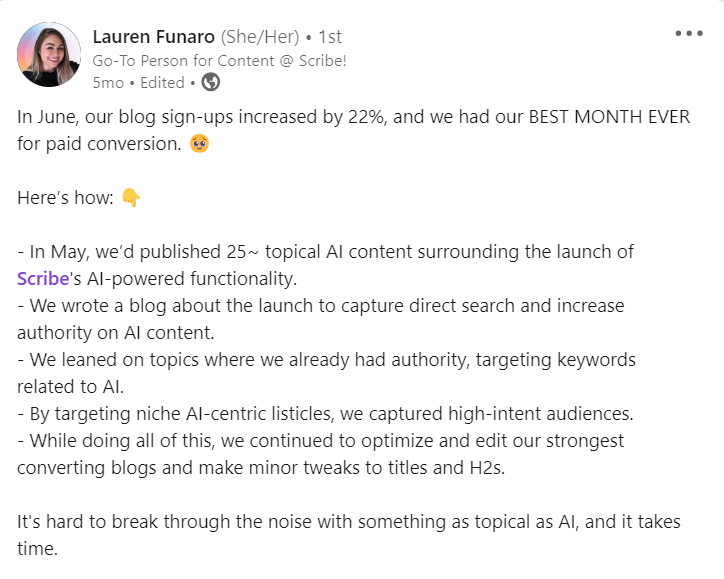
- Website: Your website is your first salesperson. A good website will give potential customers everything they need to learn how your product/service can help them and its best use cases. Here’s an example of how Floik has embedded an interactive demo to show their product in action and improve the buyer experience.
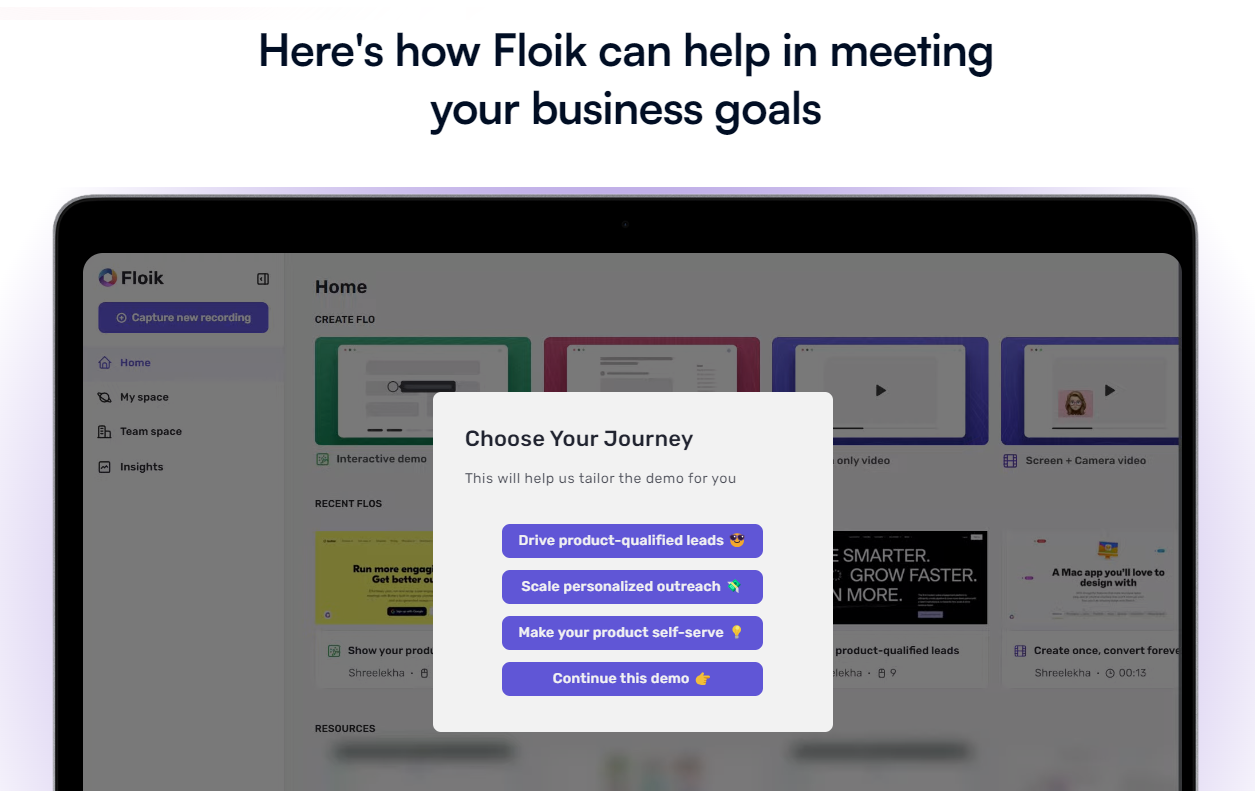
- Social media: If you’re not tapping into social media channels to build your brand presence, you’re leaving money on the table. Your social profiles will help you reach a bigger audience and capture buyer interest. Yusef Bouza emphasizes the growing significance of building a personal brand to move the needle for your business.
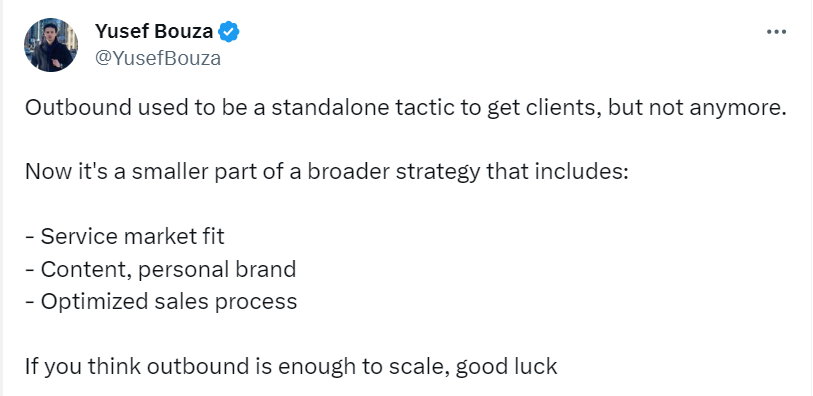
- Email marketing: Building an email list pays long-term dividends. Email automation tools can set up behavioral triggers and personalize communication with potential customers. You can also nurture leads with drip campaigns to take them from awareness to purchase.
But inbound sales tactics also have their fair share of disadvantages. Here’s an experienced SDR explaining the main drawbacks of an inbound sales motion: lower-value contracts, less control over the targets, and losing control over conversations.

Outbound Sales 101: What, When, How Answered
Outbound sales refers to the strategic process of finding potential customers, contacting them via emails/calls/messages, and pitching your product or service. Instead of educating potential buyers, you have to directly initiate conversations with prospects and explain how your offering can solve their challenges.
Let’s delve into a practical example to illustrate how an outbound sales process typically unfolds, step by step.
1. Identify the target audience through market research, focusing on demographics and needs relevant to your product or service.
2. Generate a list of potential leads, using methods like purchasing databases, networking on LinkedIn, or attending industry events.
3. Craft personalized outreach messages for each prospect, highlighting how your offering addresses their specific challenges.
4. Use multiple channels such as emails, phone calls, and social media for outreach, ensuring a broader and more effective reach.
5. Persistently follow up with prospects to keep the conversation going, provide additional information, and address any queries.
6. Work towards closing the sale by negotiating, resolving any concerns, and finalizing the deal.
7. Maintain the relationship post-sale with follow-ups and customer service to foster goodwill and potential future business.
Traditionally, outbound sales have been purely sales-driven since sales reps didn’t collaborate with marketing teams in any part of the cycle. But today, the best sales teams have cross-functional workflows to seek marketing support wherever required.
When should you choose outbound sales?
Will an outbound sales strategy work for you? The short answer: it depends. An outbound motion can generate results only when you have the right resources and business goals.
Here are a few scenarios when you should implement an outbound strategy:
- High-value transactions: If you’re selling a high-value product or service, you can’t simply launch marketing campaigns and expect prospects to come to you. You must build trust and establish relationships through personalized outreach to drive conversions.
- Rapid market penetration: You can take the outbound path to grab the first-mover advantage in a new vertical with low competition. Reaching out to prospects will help you build momentum and create awareness about your offering while bringing sales.
- Inbound channels are maturing: Most inbound marketing channels take time to produce visibility and ROI. While these channels mature, you can leverage sales outreach to talk to buyers directly and create buzz.
- Targeting enterprise organizations: Bigger companies have a large hierarchy of decision-makers. You have to go through several rounds of sales conversations before finally closing a deal. The outbound approach is perfect for you if you target such enterprise clients.
How to design your outbound sales strategy?
We’ve summed up our best practices for building an outbound strategy. Let’s break down each of these tips in detail.
- Define your ICP and buyer personas: Start by creating a profile of your potential customers. Take a closer look at your target audience and document the different types of buyers you’ll be selling to. This information is crucial for choosing the best channels for finding leads and qualifying prospects. These personas will also help you tailor your sales approach and personalize conversations.
- Set up lead generation channels: Once you know who you’re selling to, you have to decide where you’ll find leads. You can fast-track the prospecting process by using tools like Apollo and Hunter. Or check out LinkedIn premium costs per month to find leads from the app.
Then, create a well-organized lead database with a CRM tool like Leadsquared. Besides tracking leads, Leadsquared allows you to organize each SDR’s responsibilities, automate your sales process, and manage opportunities effectively.
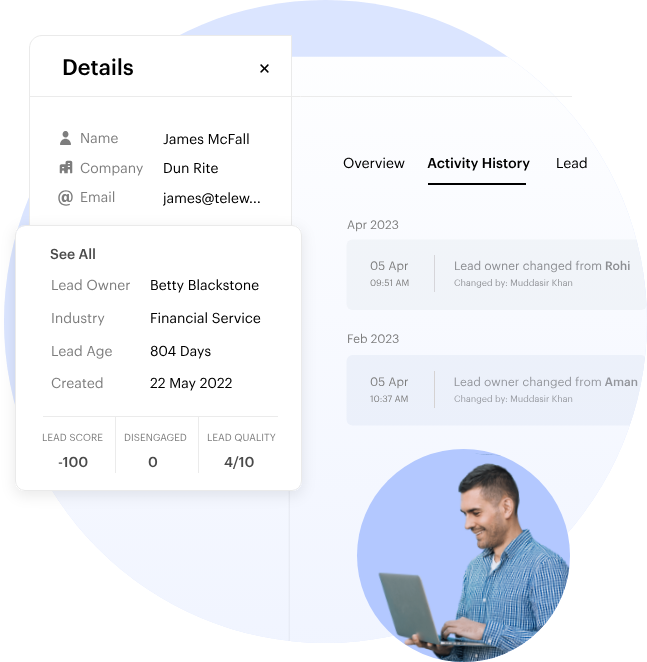
- Build workflows for outreach: After laying the groundwork for your outreach efforts, it’s time to decide how you’ll approach prospects. You can reach out to them on LinkedIn and follow up via email. Leverage bots to automate your LinkedIn tasks. And use Leadsquared’s built-in dialer to call prospects and make notes from each conversation.
- Prepare for sales meetings: You also need a good pitch for meaningful conversations with potential customers. Creating a set of sales collateral, like competitor battle cards, pricing charts, and business brochures, will also make it easier to handle sales objections.
- Finalize the closing steps: In the last stage, you need tools to sign contracts and close the deal. A good sales-to-service handoff will also make the customer experience more seamless.
With these actionable tips, you can create your outbound strategy. Remember to test and optimize different parts of your sales process to ramp up conversion rates.
Inbound vs Outbound sales: Which One’s Right for You?
Let’s address the million-dollar question: should you choose inbound or outbound sales?
While inbound sales bring you prospects who already know your brand, outbound sales give you more control over who you’re approaching.
Both approaches have their pros and cons for businesses of different sizes. Here are a few parameters to consider before deciding between inbound and outbound sales:
- Buyer behavior: You have to conduct buyer research to map their preferences and expectations when buying a product/service like yours. If they want to research independently (like 75% of B2B buyers), you should double down on the inbound motion. But if they prefer talking to sales reps, outreach will work best.
- Market maturity: You also need to consider the market you’re operating in—is it saturated with several solutions like yours, or is it fairly new with little awareness of a product like yours? The former would mean an inbound approach can drive good results, and the latter would require a personalized outreach model to win deals.
- Sales cycle length: If your sales cycle is short and buyers make decisions quickly, you can leverage inbound channels to capture attention and drive conversions. However, if you have to spend more time talking to different sets of decision-makers, it’s best to take the outbound approach and reach out to prospects personally.
- Competitive landscape: Another great way to make an informed choice here is to look at what your competitors are doing. You can analyze how buyers perceive their sales tactics to identify what’s working or not working for them.
- Product/service complexity: Lastly, you have to evaluate the complexity of your offering and how easy it is for potential customers to understand the solution on their own. If it’s a simple tool—like a social media management app, people can easily understand its use cases and make a decision. But if it’s a more complicated offering—like appointment setting services, buyers will need to speak to a business representative.
The good news is that you don’t have to make a black-or-white decision between inbound and outbound sales. You can easily combine the two approaches to generate leads and win deals. Dylan explains how these strategies can work collaboratively:
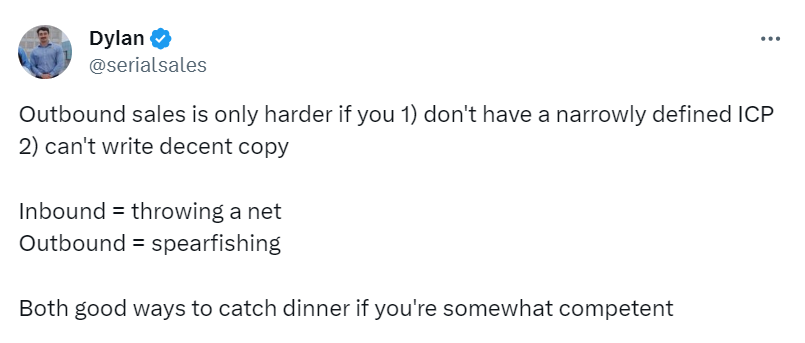
Here are a few proven tactics to integrate inbound and outbound sales:
- Tap into content marketing to generate warm leads: While your content will educate potential customers, you can create lead magnets—like research reports or eBooks—to generate high-intent leads. Focus on targeting their pain points and talk about topics of interest for your buyers.
- Personalize outreach based on inbound interactions: Track behavioral data to understand how prospects interact with your brand. You can monitor interactions like website visits and content downloads. Then, use these data points to personalize your outreach messages.
- Leverage marketing automation and CRM: Add a tool like Leadsquared to your sales tech stack and bring your marketing + sales teams on the same page. This alignment will help automate several parts of your inbound marketing strategy and capture leads in your CRM.
- Use social selling techniques: Build employee advocacy on social media and establish an active presence on relevant platforms to become more visible among your target audience. You can also use social listening tools to see what people say about your brand, competitors, or the industry.
The bottom line: you can combine your inbound marketing efforts with an outbound sales motion to take a balanced approach to selling.
Over to You: Create Your Sales Strategy Today!
Inbound sales can bring you warm leads, and outbound sales can bring you bulk leads. Both strategies have their unique advantages and disadvantages.
But you can integrate elements of both these approaches to reach your target buyers and boost your bottom line. Start by setting up inbound marketing channels, like your website, blog, and social media, to generate brand awareness and interest.
At the same time, you can build your sales outreach workflows to reach high-ticket clients.








